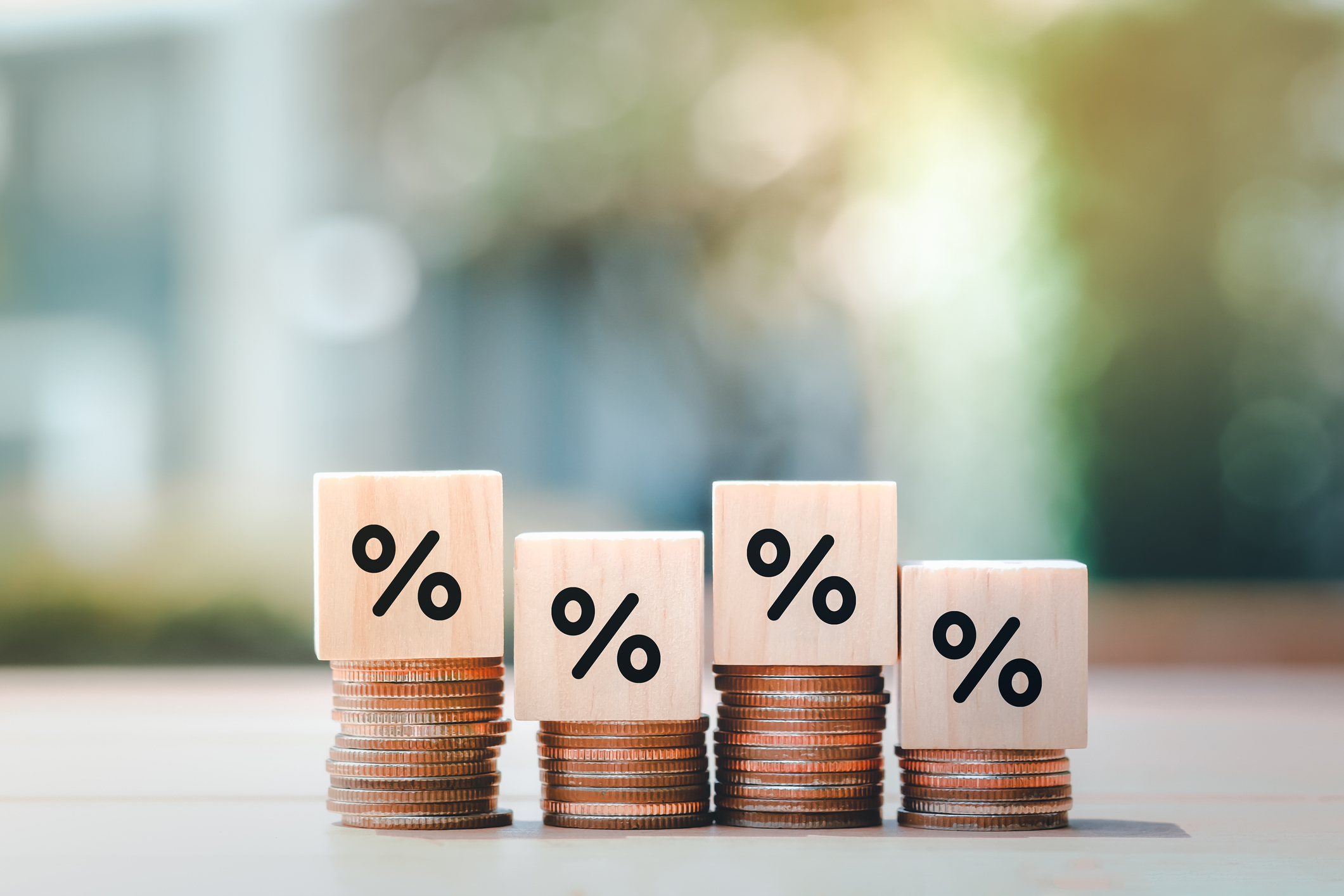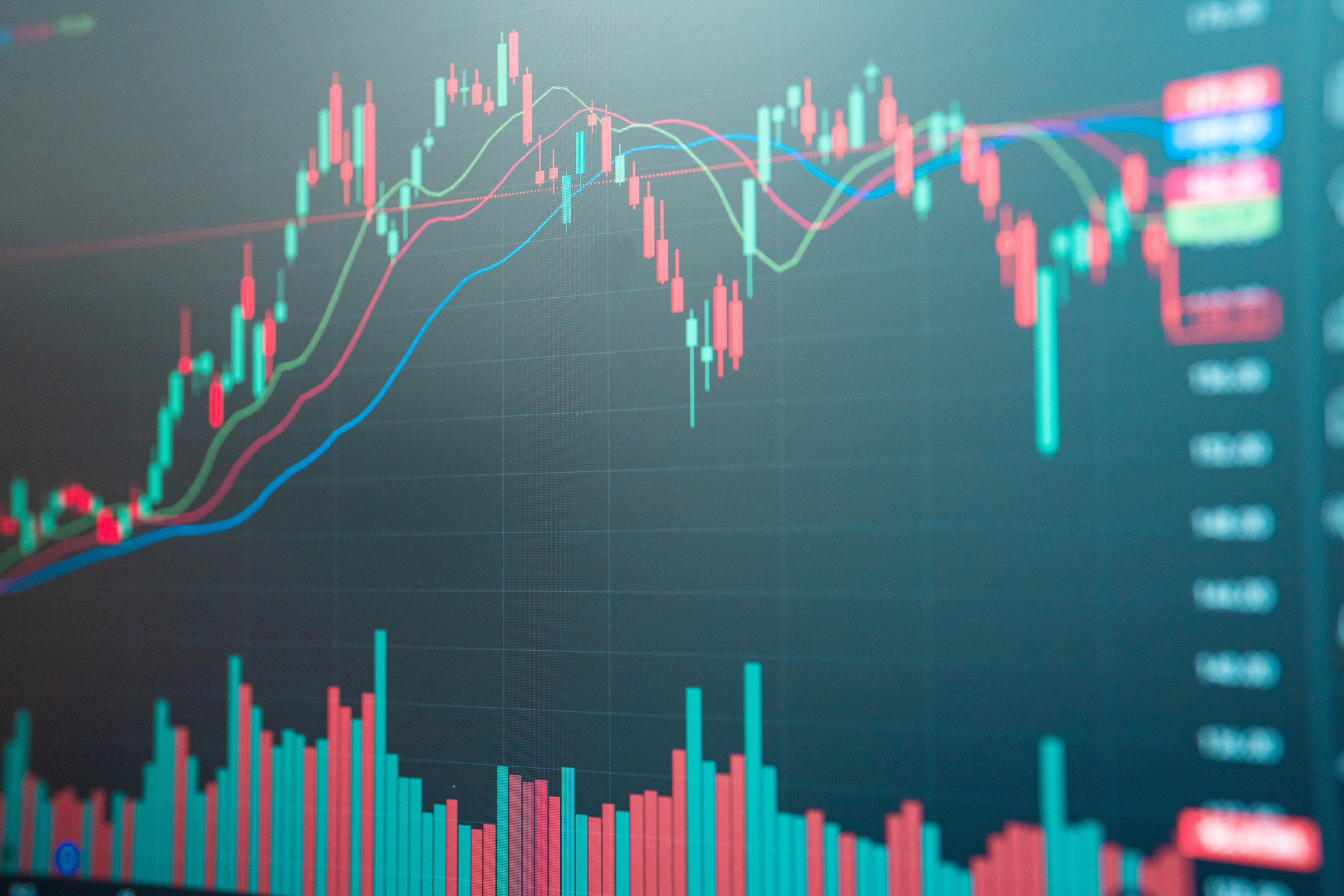5 New ETFs for Investors to Consider
The U.S. exchange-traded fund industry continues to create new options for investors. Here are five new ETFs for investors to consider.


The U.S. exchange-traded fund (ETF) industry set a record in 2024 with 746 new ETFs launched, up from 520 in 2023 and 413 in 2022.
U.S. ETFs ended 2024 with assets of $10.35 trillion, 27.5% higher than in 2023. Net inflows were $1.17 trillion, well ahead of the previous record of $920 billion in 2021. There are now 3,9300 ETFs for investors to choose from trading on a U.S. stock exchange.
Actively managed ETFs are one area of the industry that continues to grow. In 2024, active ETFs accounted for 78% of the new launches. However, many of these new ETFs are passively active, meaning the portfolio managers have little discretion over the funds' holdings.
Another significant development in new ETFs is that funds based on options accounted for 25% of the latest launches this year, with leveraged/inverse and cryptocurrency funds also making a dent.
While ETF providers launched many new ETFs in 2024, the top 40 account for over half the $10.35 trillion in net assets. Thus, many funds are fighting for the remaining funds.
New ETFs allow investors to explore strategies that haven't been considered before or cheaper alternatives to gain exposure to tried-and-true approaches.
With that in mind, here are five of the most interesting new ETFs that hit the market in the second half of 2024.
Data is as of January 17.

Jensen Quality Growth
- Category: U.S. fund large growth
- Assets under management: $86.3 million
- Expenses: 0.57%, or $57 annually for every $10,000 invested.
The Jensen Quality Growth ETF (JGRW, $26.21) is the first of five of the best new ETFs launched within the last six months. JGRW is an actively managed ETF that launched on August 13, 2024.
The ETF seeks to provide investors with a concentrated portfolio of 25 to 30 large-cap growth stocks that meet the selection process of Oregon-based Jensen Investment Management.
"This ETF is designed for long-term investors seeking capital appreciation with less risk than the S&P 500 over full market cycles. Our experienced Investment Team is committed to delivering a conservative investment approach that aligns with our clients' long-term goals," stated the August 13 press release announcing the ETF's launch.
The portfolio managers start the selection process by identifying 40 to 50 stocks with the strongest competitive advantages among large-cap stocks. The companies that make the initial cut have generated a return on equity of 15% or more for the past 10 years.
Further criteria to be added to the ETF's holdings include projected operating earnings per share growth over the next five to 10 years, revenue growth over the previous five to 10 years, earnings per share growth over the last five to 10 years and the ability to grow free cash flow over the long term.
JGRW's top three holdings by weighting are Microsoft (MSFT), at 7.64%, Accenture (ACN), at 7.27%, and Apple (AAPL), at 7.08%. The top 10 holdings account for 58.3% of its net assets. JGRW has 27 stocks in its portfolio.
The average market cap of its holdings is $264.85 billion vs a large-cap growth category average of $383.78. Technology accounts for 45.58% of the portfolio, with healthcare having the second-highest weighting at 15.46% and financial services in third place at 10.76%.
Learn more about JGRW at the Jensen Investment Management provider site.

Rockefeller Small-Mid Cap ETF
- Category: U.S. fund mid-cap growth
- Assets under management: $794.5 million
- Expenses: 0.75%
Although the Rockefeller Small-Mid Cap ETF (RSMC, $26.36) only launched on October 10, it has already attracted nearly $800 million in net assets, making it one of the largest actively managed small-cap and mid-cap focused ETFs available.
Jason Kotik and Tim Skiendzielewski, portfolio managers at Rockefeller Asset Management, manage the ETF. The duo has more than 40 years of combined experience in small-cap investing.
"We believe key cyclical and secular drivers, including deglobalization, an inflation backdrop that favors returns for smaller companies, and a Fed rate cutting cycle, may support small and mid-cap fundamentals for the next several years and the current environment may represent a significant opportunity for investors seeking uncorrelated alpha," Kotik stated in the company's October press release announcing the ETF's launch.
The portfolio managers invest in U.S. small- and mid-cap companies. To be considered a SMID cap, a company must have a market cap that would qualify it for the Russell 2500 Index. These firms generate at least 50% of their revenue or profits from goods and services produced or sold in the U.S. or have at least 50% of their assets in the U.S.
Kotik and Skiendzielewski look for companies with competitive advantages, growth opportunities at the top and bottom lines, quality management, healthy balance sheets and attractive valuations.
The ETF's top three holdings by weighting are Stride (LRN), at 3.93%, TD Synnex (SNX), at 3.64%, and Merit Medical Systems (MMSI), at 3.57%. The top 10 holdings account for 33.6% of its net assets. RSMC currently has 45 holdings in its portfolio.
Learn more about RSMC at the Rockefeller Asset Management provider site.

FT Vest U.S. Equity Equal Weight Buffer ETF
- Category: U.S. fund defined outcome
- Assets under management: $22.2 million
- Expenses: 0.85%
First Trust launched the FT Vest U.S. Equity Equal Weight Buffer ETF (RSSE, $20.22) on September 20. It's one of First Trust's actively managed Target Outcome ETFs, a group of funds that seeks to deliver the returns of a reference asset such as the S&P 500 while limiting downside risk.
RSSE tracks the performance of the Invesco S&P 500 Equal Weight ETF (RSP), which provides equal-weight exposure to the S&P 500. Equal-weight ETFs can effectively capture the performance of smaller stocks in an index. In the past decade, RSP has outperformed the SPDR S&P 500 ETF Trust four times.
Why would somebody buy this ETF? If investors are interested in achieving a certain upside return while limiting the downside risk.
In the case of RSSE, the upside annual return is capped at 14.71%, while the first 10% of losses are eliminated through a buffer over a specific one-year period. In this case, the year runs from September 24, 2024, through September 19, 2025. The target outcome will be reset in September for another 12 months.
Although RSP has only experienced a loss of 10% or more on one occasion (-11.62% in 2022) in the past decade, were the index to go on a lengthy losing streak, you would be buying yourself some protection on the first 10% of the downside.
While the ETF is designed for a full one-year hold, you can buy shares at any time intra-period, but your cap and buffer levels would be different from those who purchased at inception. If you go to the First Trust website, it can tell you what your cap and buffer levels are.
If you're unsure of the future direction of the S&P 500, this could be the ETF for you.

GMO International Quality ETF
- Category: U.S. fund foreign large value
- Assets under management: $5.7 million
- Expenses: 0.60%
The GMO International Quality ETF (QLTI, $23.23) launched on October 28. It's an active ETF from GMO LLC (Grantham, Mayo, Van Otterloo & Co.), a Boston-based asset manager known for its long-term, valuation-based investment philosophy.
GMO is relatively new to the ETF business. In November 2023, it released its first ETF, the GMO U.S. Quality ETF (QLTY), which has grown to $1.5 billion in net assets. In addition to QLTI, GMP introduced two other ETFs at the end of October.
"GMO's new ETFs are designed to provide investors exposure to areas of the market where we see compelling opportunity today: dislocated value stocks both in the U.S. and abroad and high-quality businesses outside the U.S.," said Ben Inker, co-head of asset allocation at GMO.
QLTI is an international version of QLTY. The ETF invests in historically profitable companies with strong fundamentals that can outgrow their peers, resulting in premium valuations for these companies.
The three portfolio managers responsible for the ETF's active management have nearly 90 years of combined industry experience, mainly with GMO. They look for companies with high and sustainable return on capital.
The summary prospectus states that the fund may sometimes overweight a country, sector, or industry in its quest for market-beating returns. It does not focus on one particular market cap, although the average stock held has a market cap of $99.08 billion, considerably higher than the foreign large-cap value category.
The ETF has 35 holdings, which is about 5% of the holdings of its MSCI World ex USA Index benchmark. Its top 10 holdings account for nearly 44% of its net assets.
The top three sectors by weight are healthcare (22.27%), consumer staples (22.18%) and technology (20.94%). All three are much higher than the benchmark's weighting. Approximately 83% of the holdings are European companies compared to 59% for the index.
It charges a reasonable 0.60%.

iShares iBonds 1-5 Year Corporate Ladder ETF
- Category: U.S. fund corporate bond
- Assets under management: $6.0 million
- Expenses: 0.10%
The iShares iBonds 1-5 Year Corporate Ladder ETF (LDRC, $24.94) is the most recent launch of the five ETFs, having made its market debut on November 7. iShares released LDRC along with three other laddered bond ETFs.
Ladders allow investors to hold bonds maturing at different dates to protect against fluctuations in interest rates. They also provide steady income, which is vital for income-focused investors.
As its name implies, LDRC focuses on investment-grade corporate bonds maturing within six years. It provides a professionally managed bond ladder that generates income while managing interest rate risk. The fund is a passive ETF designed to track the performance of the BlackRock iBonds 1-5 Year Corporate Ladder Index, a collection of iShares iBond ETFs.
At launch, the fund of funds included five ETFs: iShares iBonds Dec 2025 Term Corporate ETF (IBDQ), iShares iBonds Dec 2026 Term Corporate ETF (IBDR), iShares iBonds Dec 2027 Term Corporate ETF (IBDS), iShares iBonds Dec 2028 Term Corporate ETF (IBDT) and iShares iBonds Dec 2029 Term Corporate ETF (IBDU).
They all track the performance of their respective indexes. They are equal-weighted and rebalanced annually on the last business day in June.
The top three sectors by weight are industrials (61.13%), financials (30.54%) and utilities (7.29%). Cash and Treasury account for the remaining 1.04%. The top three weightings by credit quality are BBB (52.60%), A (37.41%) and AA (8.34%). The weighted average maturity is 2.37 years. The top three companies by weight are Ford Motor Credit (1.18%), General Motors Financial (1.09%) and Apple (1.08%).
At 0.10%, you can't do much better for a specialty fixed-income product.
Learn more about LDRC at the iShares provider site.
Related content
Profit and prosper with the best of Kiplinger's advice on investing, taxes, retirement, personal finance and much more. Delivered daily. Enter your email in the box and click Sign Me Up.

Will has written professionally for investment and finance publications in both the U.S. and Canada since 2004. A native of Toronto, Canada, his sole objective is to help people become better and more informed investors. Fascinated by how companies make money, he's a keen student of business history. Married and now living in Halifax, Nova Scotia, he's also got an interest in equity and debt crowdfunding.
-
 Seven Surprising Reasons Retirees Are Going Back to Work
Seven Surprising Reasons Retirees Are Going Back to WorkSure, money is a big reason to come out of retirement, but it's not the only reason retirees are doing it.
-
 Dow Gains 617 Points as Rate Cuts Near: Stock Market Today
Dow Gains 617 Points as Rate Cuts Near: Stock Market TodayWednesday's economic data didn't shift Wall Street's expectations that the Fed is preparing for a rate cut at next week's meeting.
-
 Dow Gains 617 Points as Rate Cuts Near: Stock Market Today
Dow Gains 617 Points as Rate Cuts Near: Stock Market TodayWednesday's economic data didn't shift Wall Street's expectations that the Fed is preparing for a rate cut at next week's meeting.
-
 Hot August CPI Report Doesn't Shift the Rate-Cut Needle: What the Experts Say
Hot August CPI Report Doesn't Shift the Rate-Cut Needle: What the Experts SayThe August CPI came in higher than forecast on a monthly basis, but Wall Street still expects a rate cut at next week's Fed meeting.
-
 Four Clever and Tax-Efficient Ways to Ditch Concentrated Stock Holdings, From a Financial Planner
Four Clever and Tax-Efficient Ways to Ditch Concentrated Stock Holdings, From a Financial PlannerHolding too much of one company's stock can put your financial future at risk. Here are four ways you can strategically unwind such positions without triggering a massive tax bill.
-
 Beyond Banking: How Credit Unions Serve Their Communities
Beyond Banking: How Credit Unions Serve Their CommunitiesCredit unions differentiate themselves from traditional banks by operating as member-owned financial cooperatives focused on community support and service rather than shareholder profit.
-
 S&P 500 Hits New High After Oracle Earnings: Stock Market Today
S&P 500 Hits New High After Oracle Earnings: Stock Market TodayAnother down day for Apple held the Dow Jones Industrial Average back, though.
-
 StubHub IPO: Should You Buy STUB Stock?
StubHub IPO: Should You Buy STUB Stock?The highly anticipated StubHub IPO is right on our doorstep, with the online ticket marketplace expected to start trading later this month.
-
 What Your Portfolio Says About You – and Your Relationship with Risk
What Your Portfolio Says About You – and Your Relationship with RiskHow well do you understand yourself and your risk tolerance? Being able to answer this question will help you become a better investor.
-
 Answers to Every Early Retiree's Questions This Year, From a Wealth Adviser
Answers to Every Early Retiree's Questions This Year, From a Wealth AdviserFrom how to retire in a crazy market to how much to withdraw and how to spend without feeling guilty, a financial pro shares the advice he's given this year.
